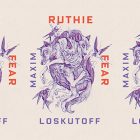Reading World of Wonders: In Praise of Fireflies, Whale Sharks, and Other Astonishments

The natural world Aimee Nezhukumatathil describes in her collection World of Wonders: In Praise of Fireflies, Whale Sharks, and Other Astonishments, out today, is awe-inducing and delightfully whimsical. In her essays, each mostly written around a particular species, Nezhukumatathil meditates on nature while also depicting her coming-of-age journey, experience with racism, family relationships, and new motherhood. Half-Filipino and half-Indian, Nezhukumatathil describes the implicit and explicit racism she has faced as well as the ways she’s felt unseen because of the color of her skin and family origin. Still, Nezhukumatathil cultivates optimism through the sparkle and shrieks of the animals she describes and the flora and fauna right outside our windows. Perhaps counterintuitively, she sometimes imbues the natural world with human qualities, which contributes to the collection’s whimsy, but she points out, too, how humans have put at risk some of the most wonderous species and phenomena, cautioning us to consider our actions and how they impact all of the living things around us. Despite the catastrophes of climate change and flagrant racism, Nezhukumatathil’s essays radiate wonder and delight.
Nezhukumatathil’s memories crystallize around the landscapes where she grew up. In Arizona during the ’80s, when the slogan “TAKE A BITE OUT OF CRIME” was being impressed upon her and her playmates, Nezhukumatathil gleaned confidence from “[t]hose mighty saguaros,” a confidence that was essential growing up as a brown girl in a primarily white landscape. Once, on a school bus in Kansas, a boy she had considered a friend used a racial slur for her mother and flipped his eyelids inside out, willfully misidentifying her mother’s race. In response, Nezhukumatathil was silent, exiting the bus without a word, but her reaction bothered her. “I couldn’t figure out why, [I] didn’t have the words,” Nezhukumatathil muses. “It wasn’t shame exactly, not anger exactly, but something like a wasp’s stinger in the fleshy pad just under my thumb. The pain lingered.” The racism she experienced was at odds with the love she experienced in her family as well as with the kindness she felt from other kids at school. She reflects, “There were good kids here. Kids who, no matter what they learned from television or their own parents, would still reach out for my hand, for a hug . . . I learned that all sunflowers eventually turn toward the sun.” Her discoveries about the natural world happened alongside her discoveries about human nature, complements in understanding that good and hate can exist alongside each other. The movements of the sunflowers lining the side of the road morphed from myth to fact, helping her look upward, to notice the good, too.
Even as she swiftly adapted socially to each new environment she encountered growing up, always existing in spaces in which she was the only brown girl, she continued to be othered. Returning from her first trip to India, where she became enamored with shimmering blue peacocks she saw, eight-year-old Nezhukumatathil settled into a new school in Arizona. When the teacher had the class draw animals, Nezhukumatathil was quick to begin working on a peacock. In the midst of their coloring, the teacher said to the whole class, “Some of us misunderstood the assignment . . . Some of us will have to start over and draw American animals. We live in Ah-mer-i-kah!” Then she looked right at Nezhukumatathil and said, “Aimee— . . . Looks like you need a do-over!” In response, Nezhukumatathil drew “the most American thing [she could] think of: a bald eagle perched on a branch at the edge of a cliff, two eggs peeking up from its delicately balanced nest.” Her drawing won a schoolwide contest, but she hurried past where it hung in the hallway and buried her love for peacocks, peacock blue, and drawing after that. As with the racist boy’s taunts in Kansas, Nezhukumatathil met her teacher’s public shaming with silence and conformity, a tactic to help her survive for the time being. “This is the story of how I learned to ignore anything from India,” she says. “But what the peacock can do is remind you of a home you will run away from and run back to all your life.”
For a time, Nezhukumatathil chose to run, making compromises so she could fit in rather than stand out because of the color of her skin. “I grew up wanting to blend in—in my case, with my blonde counterparts—and why would I know anything else?” she asserts. “I felt most seen in my childhood not by any television show or movies but rather when I was in the outdoors, in forests or fields, by lake or ocean.” Outside she didn’t have to consider how she fit, so she frequently turned to the natural world to occupy her time, learning to call cardinals by six and then progressing to having whole conversations with them, a practice she’s kept. “If I wanted to see them, I had to mimic their stillness,” Nezhukumatathil explains, “to move slow in a world that wishes us brown girls to be fast.” From the natural world, she learned to alter her preferences and dispositions when faced with her peers’s microaggressions, not yet knowing how to assert herself. When a white girl told her red lipstick wasn’t the right choice for her, she “remember[ed] the smile of an axolotl,” a salamander-like amphibian. “The best thing to do in that moment is to just smile and smile, even if your smile is thin,” Nezhukumatathil suggests. “The tighter your smile, the tougher you become.” Nezhukumatathil built a quiet strength, a strength that bloomed into something greater as she grew in confidence, fell in love, became a wife, and then a mother.
Eventually, Nezhukumatathil reclaimed what she’d taught herself to ignore in her youth—peacock blue, red lipstick, India, the Philippines—and let her passion for flora and fauna take over. She started using the corpse flower as her dating metric. “When I was single, the corpse flower was a way to help clear out the sleaze, the unsavory, the unpleasant—the weeds—of the dating world,” she says. She ghosted dates depending on their reaction to her description of the flower, particularly its stench. In one of her many startlingly fresh descriptions, Nezhukumatathil describes the flower’s distinctive smell as “basically what [she] imagine[s] emanates from the bottom of a used diaper pail left out in the late August sun, after someone has also emptied a tin of sardines and a bottle of blue cheese salad dressing on top.” Her descriptions are not only vivid, but they anthropomorphize nature in a way that doesn’t add to the damage humans have already done. Catalpa trees, another example, are an enthusiastic audience: “Catalpa trees can help you record the wind as it claps its giant heart-shaped leaves together—leaves with spit curls, not unlike a naughty boy from a fifties movie, whose first drag race ends in defeat and spilled milkshakes. But these leaves can make a riot of applause on a particularly breezy day.” Nezhukumatathil’s whimsical and vivid descriptions characterize herself, too: she captures herself as a brown woman who wears red lipstick when she wants to and knows she looks good in it, who chose teal and turquoise for her wedding colors—a wedding that was so novel it made the front page of the paper. She paints herself as a woman—and child—captivated by the phosphorescent glow of fireflies and the brilliant rainbow cast by comb jellies and the bangles her grandmother gave her. Nezhukumatathil’s world is alive with color and movement and sound that she openly celebrates now.
Through her celebration of nature—and herself—Nezhukumatathil explores how it connects her to family and has played a role in building her own; in particular, nature becomes a lens through which to view motherhood. Nezhukumatathil reflects on the generosity and resilience of her own mother, a doctor who worked at a hospital for the criminally insane and faced racism from inmates and their families. “How did she manage to leave it all behind in that office, switching gears to listen to the ramblings of her fifth and sixth-grade girls and their playground dramas, slights, and victories?” Nezhukumatathil wonders. Years later, Nezhukumatathil sees her mother extend this same attention to Nezhukumatathil’s two sons, offering the boys as many Cara Cara oranges as they can possibly eat from her trees in Florida. Before the boys, Nezhukumatathil chafed at her mother’s offerings, finding her generosity overbearing. “My mother would ask me to eat an orange after breakfast. After lunch. For a snack. For dessert. And I said yes to all of these requests, at first,” she writes. “Until I began to almost resent the orange, in the last vestiges of me being a bratty teenager.” She notices that her response pains her mother, who simply offers this beautiful fruit because of how much she loves these sweet oranges from her citrus trees and only wants to share the sweetness. “Your father and I picked them this morning just for you, for you!” she tells her daughter. When Nezhukumatathil brings her sons to visit, she views her mother’s “most precious offerings” in a new light: one of her mother’s “greatest pleasures was hand-feeding them slices of fresh citrus—all the white threads lovingly pulled off for a sweet bite.” Nezhukumatathil watches her sons “squawking and chirping for another bite of ‘onge,’” in response, too young to exhibit the brattiness Nezhukumatathil traded in for appreciation after seeing how happy her mother and her sons are. Back in Mississippi, “[t]he citrus in the store looks impossible” to Nezhukumatathil, devoid of the freshness of her mother’s Cara Caras, and devoid, too, of the sentiment behind her mother’s offering.
Nezhukumatathil’s sons also shape how she describes the natural world, how she notices possible risks, and how she can foster and support her sons’ curiosity. She weaves together her description of the ribbon eel with her younger son’s first year of life, a description that marks a shift in vantage point. The eel “simply unspools itself, as if a piece of ribbon candy had unfolded and softened in the sea,” Nezhukumatathil writes before revising, saying, “Or no: that’s not right. The wiggle of its body—the undulation to end all undulations—is like my own tongue, excited to tell my husband all the minutiae of a day spent alone with our three-year-old and our infant son, Jasper.” Her family takes primacy now, a new baseline for comparison, and she begins to marvel anew at the world around her as she observes her sons marvel, sometimes at nature but sometimes simply at the flip of a light switch. “Maybe the only real thing I could do in those blurry months was marvel. Wonder,” Nezhukumatathil says. She also watches as her boys’ wonder sometimes yields hard truths, like when the chrysalis the boys have been vigilantly watching for weeks that fails to hatch. “They seemed to understand what my husband and I had known for quite some time,” Nezhukumatathil observes, “even wings can’t guarantee a smooth flight.” Here Nezhukumatathil is both literal—inside the chrysalis there is evidence of the monarch’s folded wings never furled—but also metaphorical, a lesson and a promise of inevitable hardships, a consequence of living, to follow.
Nezhukumatathil, too, continues to learn lessons from nature. After studying the whale shark for a year on sabbatical, Nezhukumatathil finally has the opportunity to swim with one in the Ocean Voyager Tank at the Georgia Aquarium. Unusually, the whale shark swims under Nezhukumatathil several times, and though she knows that whale sharks only eat plankton and bits of shrimp, she can’t help but imagining herself as “the first known casualty of being accidentally gummed to bits by a gentle whale shark.” Swimming with the whale shark fulfills her life’s dream, “but [she] couldn’t shake [her] guilt and dread for a long time after. [Her] son could have been motherless. [Her] husband, a widower.” Exiting the tank, she weeps into her hands. “I was simply unprepared to submit myself so completely to Nature,” she notes, while also acknowledging that this nature was a man-made one—she felt sad for the whale sharks bound to the tank “where they can do more than trace a slow curve around the same planted coral and faux sea-cliff.” Like her son, Nezhukumatathil felt excitement and promise, then pang at the reality of nature, a sentiment deepened by humans’ treatment of the natural—how rapidly we are driving so many species to extinction, detrimentally impacting their conditions of life, or altering phenomena.
Wonder while you can, then, Nezhukumatathil urges, and do better to protect that which we can wonder at before we lose it completely. “Where does one start to take care of these living things amid the dire and daily news of climate change, and reports of another animal or plant vanishing from the planet?” Nezhukumatathil asks. “How can one even imagine us getting back to a place where we know the names of the trees as we walk by every single day?” Much has been lost, and our changing culture will make it difficult to relearn what we once knew. But holding onto the natural world is essential, Nezhukumatathil urges; in the end, she returns to fireflies, which so enraptured her as a young girl on family road trips and that she now sees fascinating her sons—fireflies capture both the nature of memory and the nature of wonder. “[A] single firefly . . . can light a memory I thought was long lost,” she writes. The connection with nature is hard-earned, requiring stillness and observation. “[I]t takes a bit of patience, and it takes putting yourself in the right place at the right time,” Nezhukumatathil observes. “It requires that we be curious enough to forgo our small distractions in order to find the world.”



